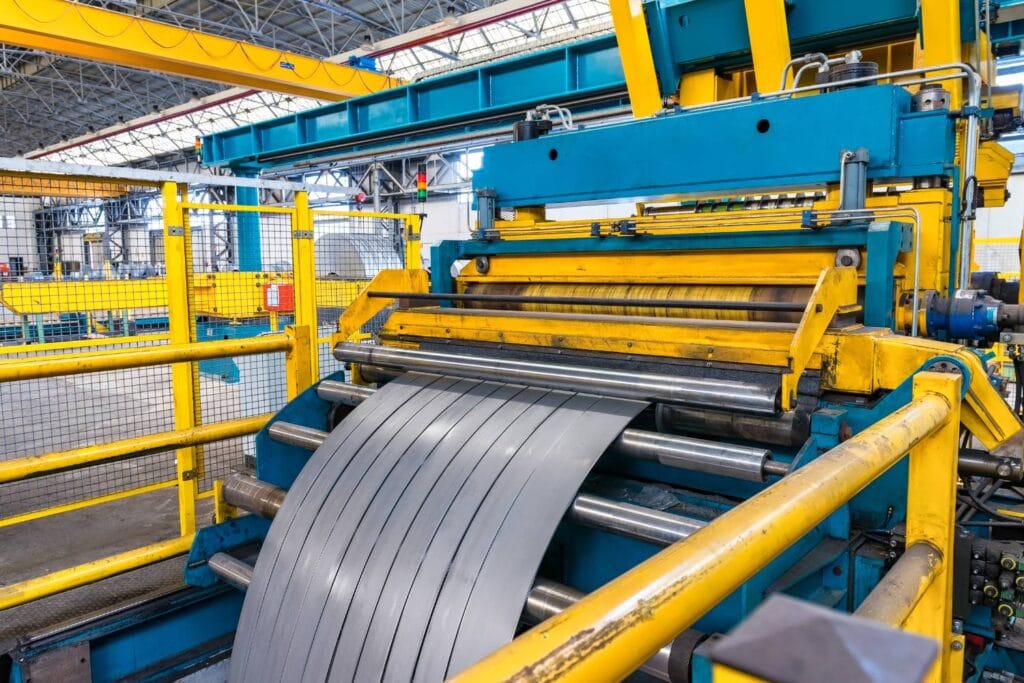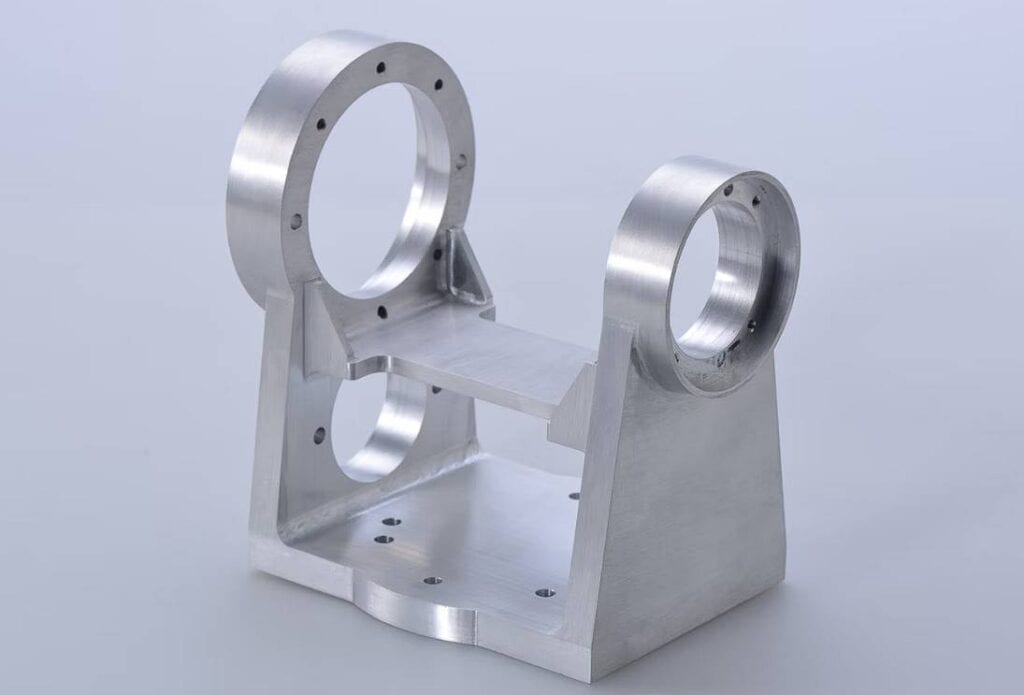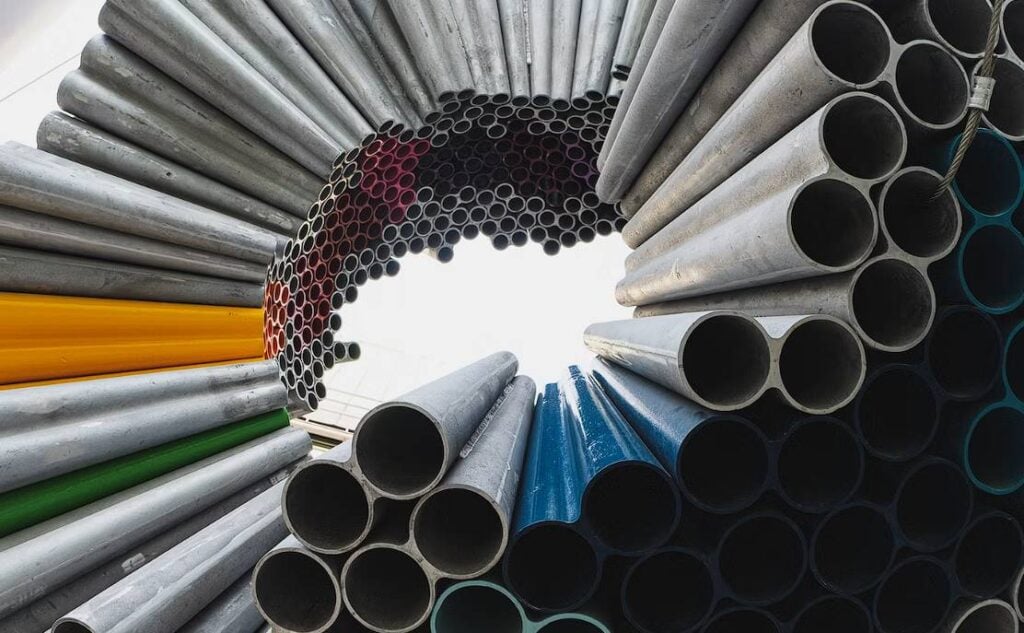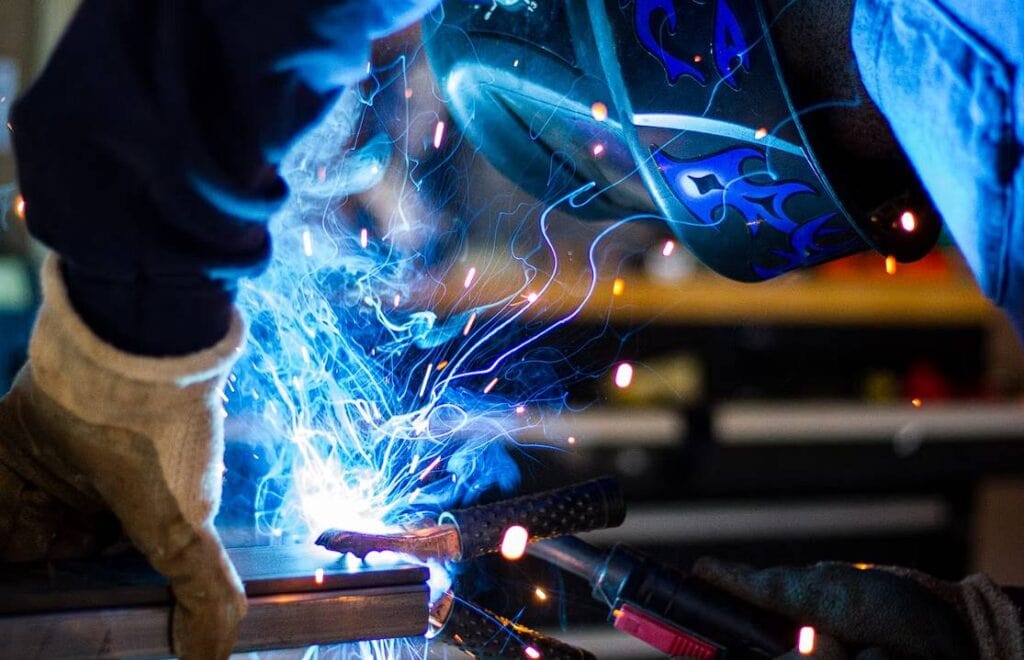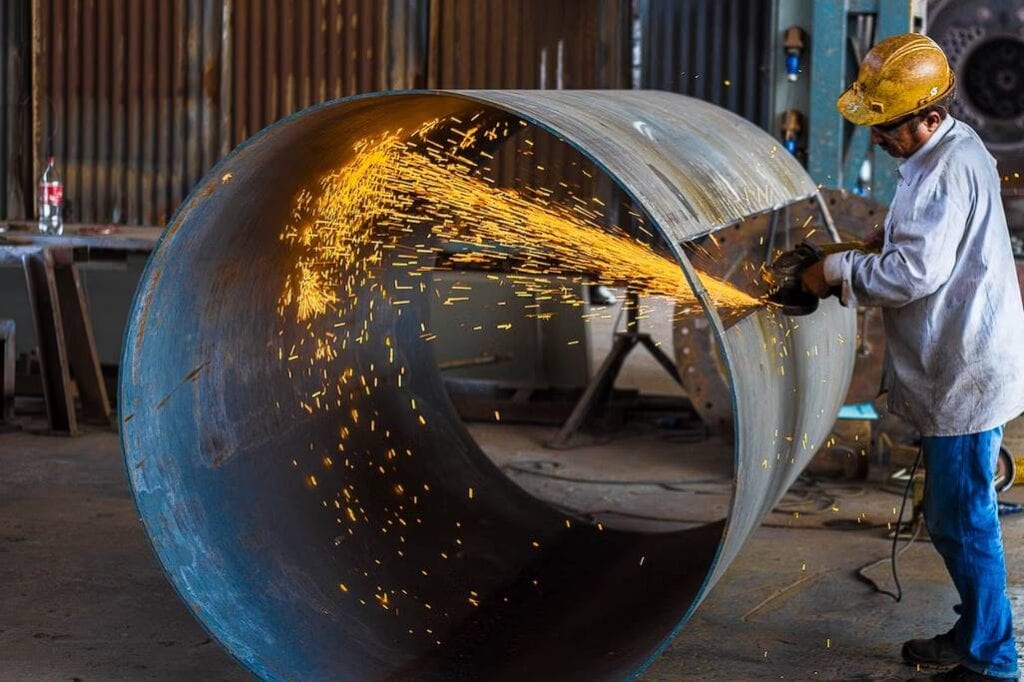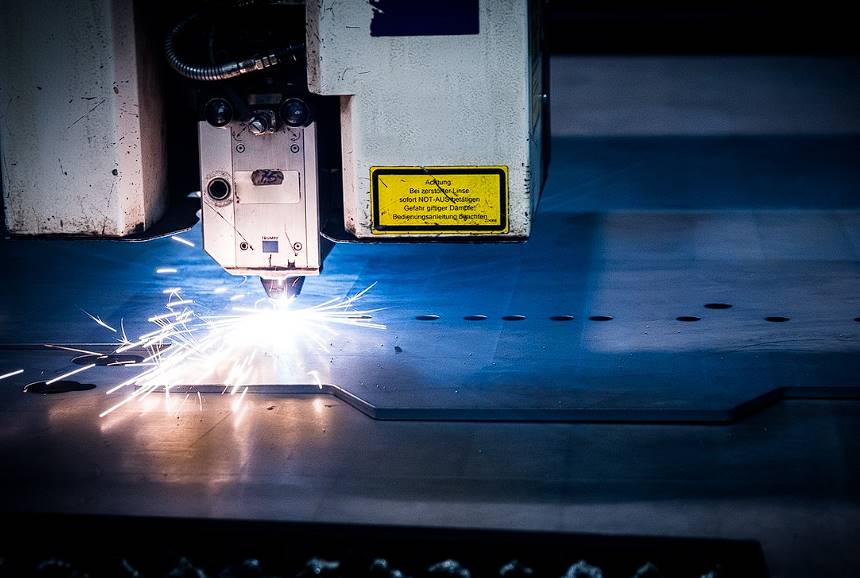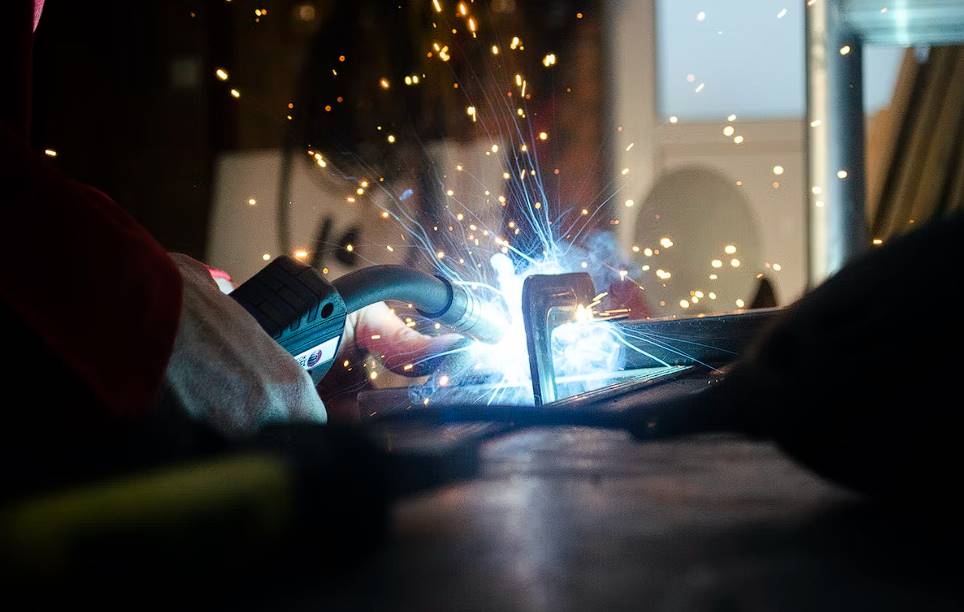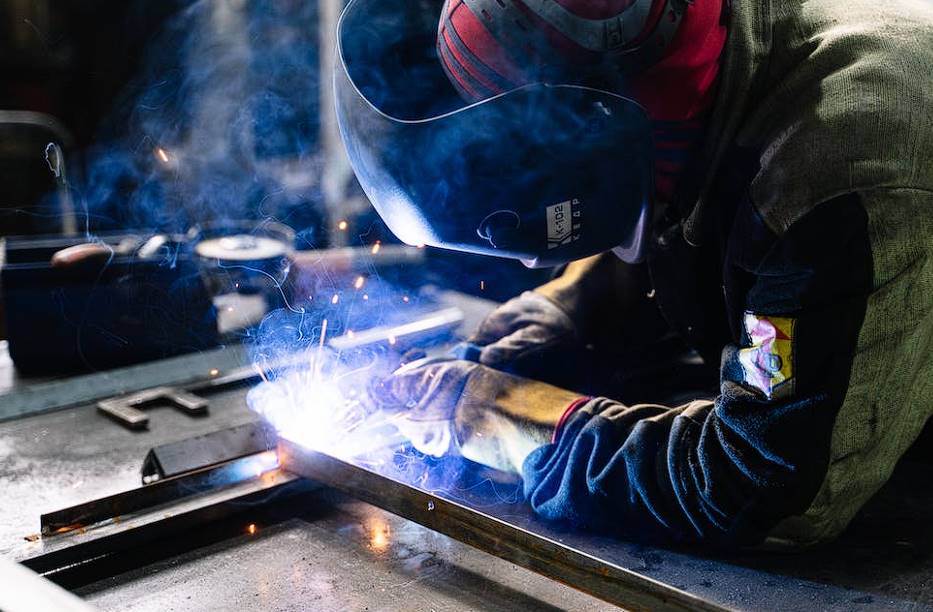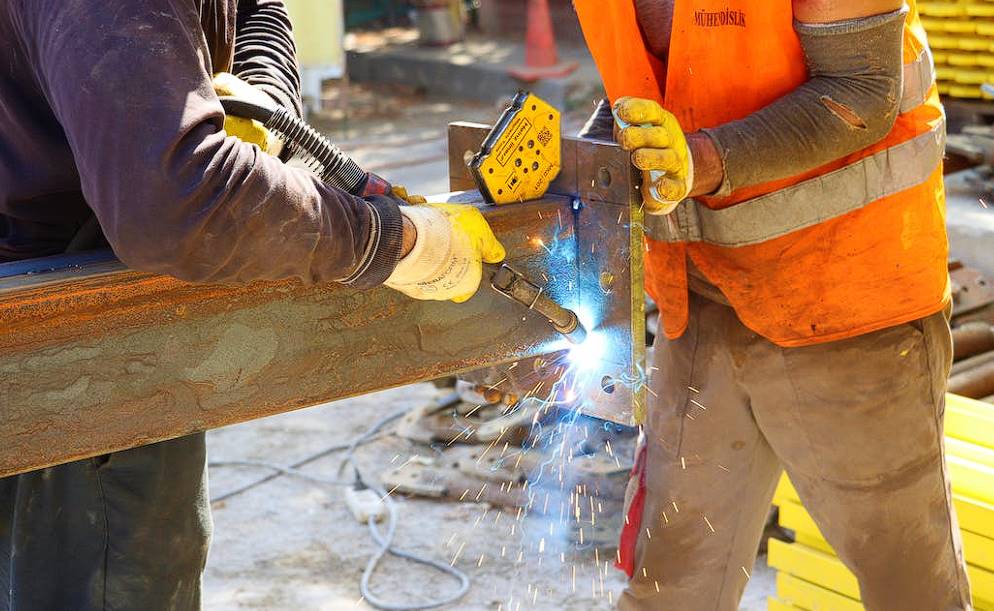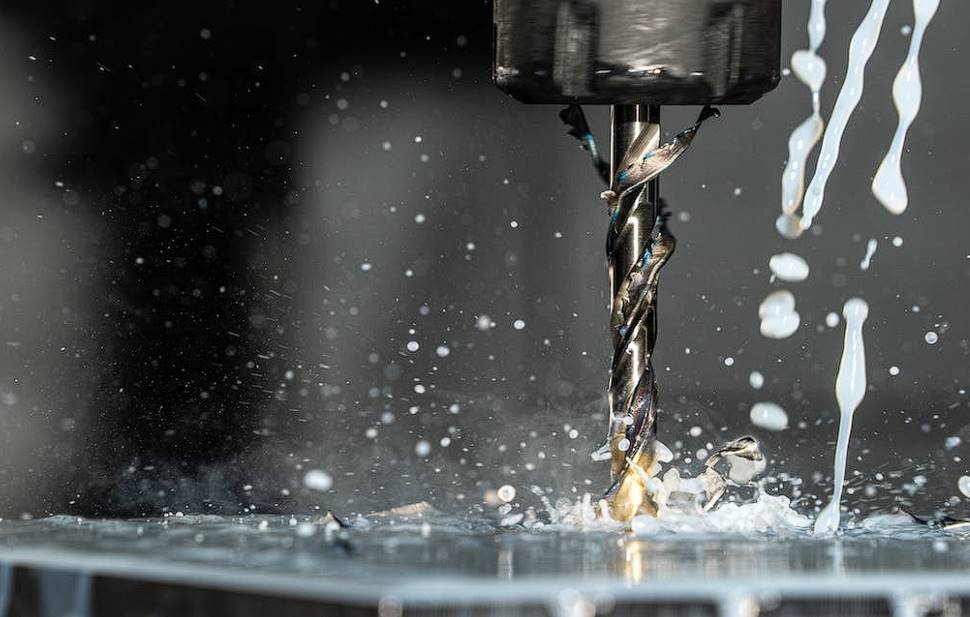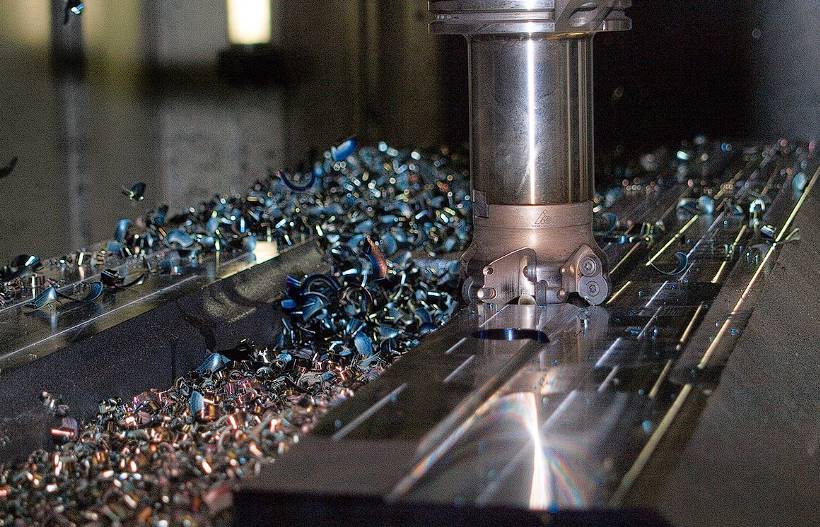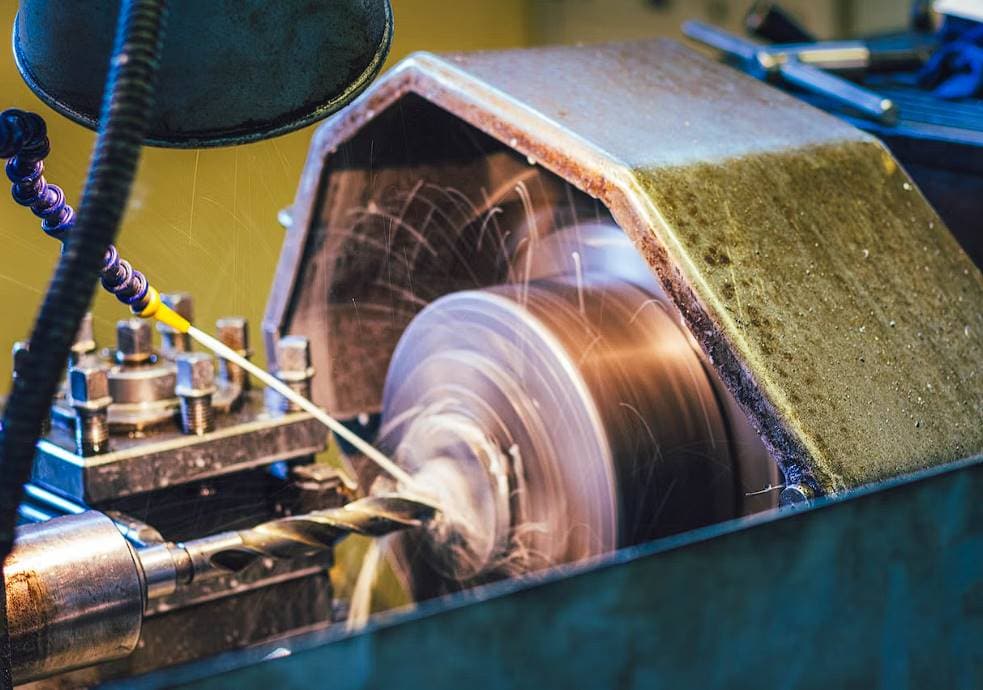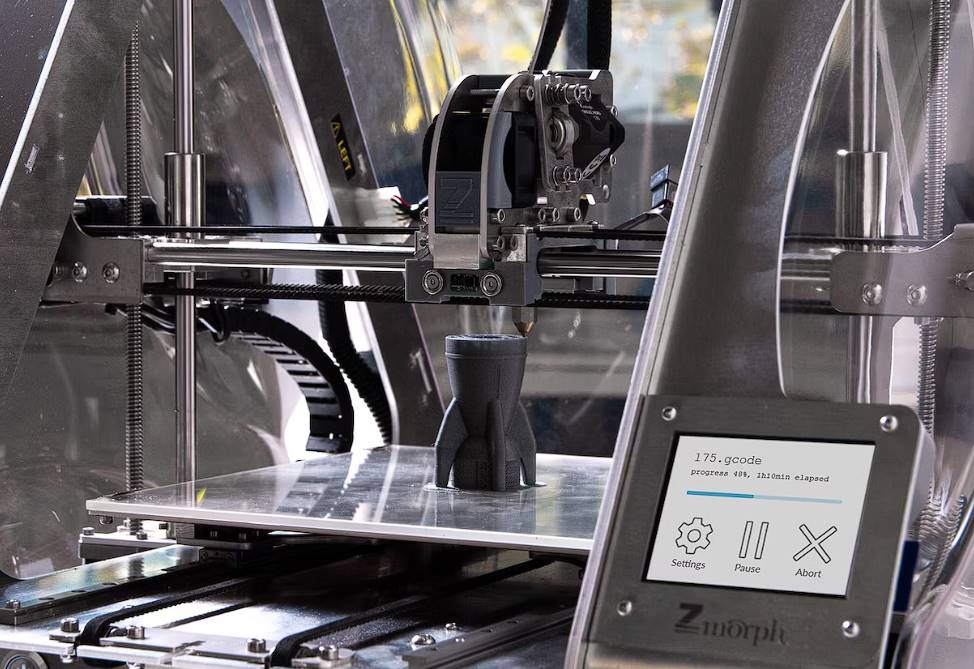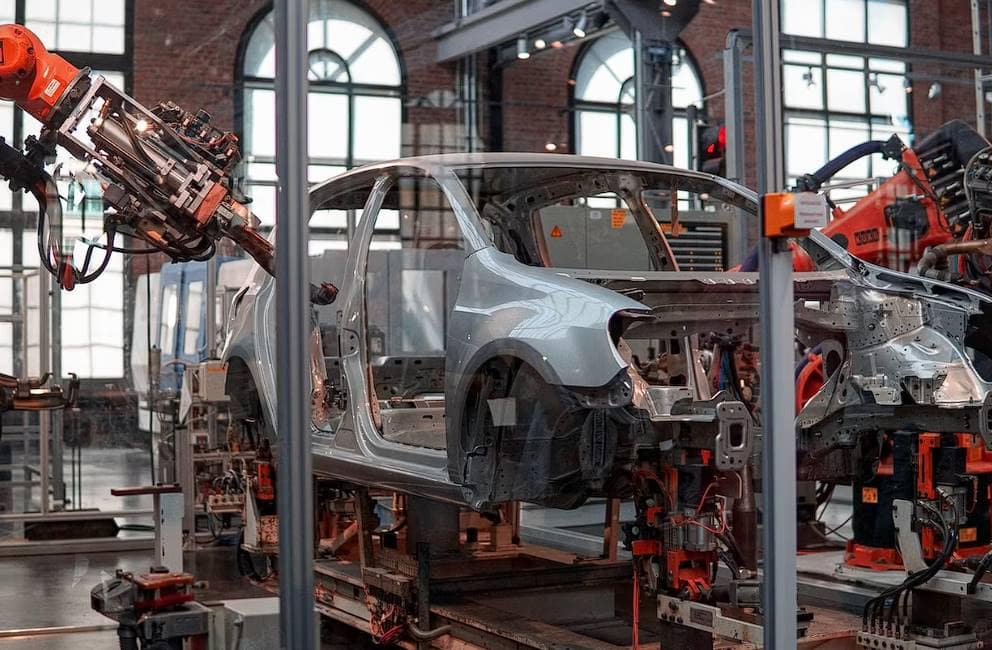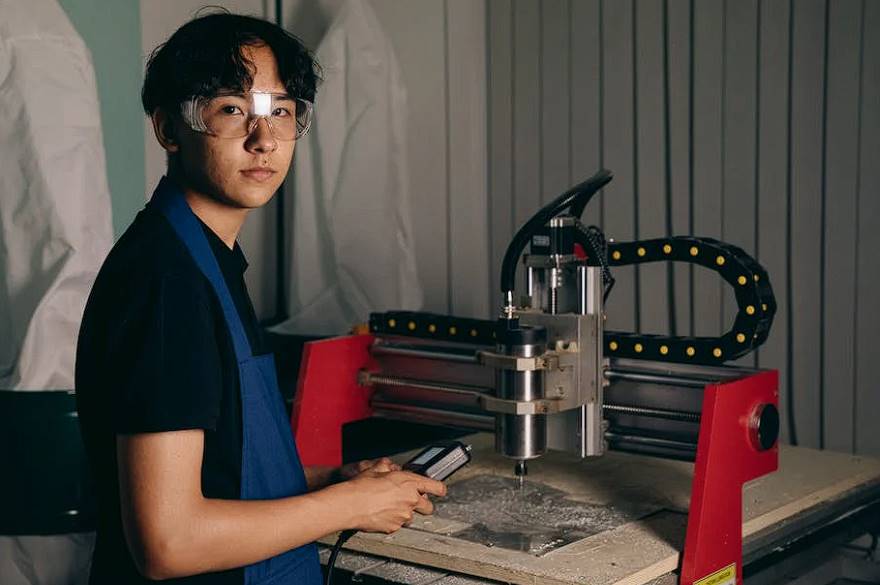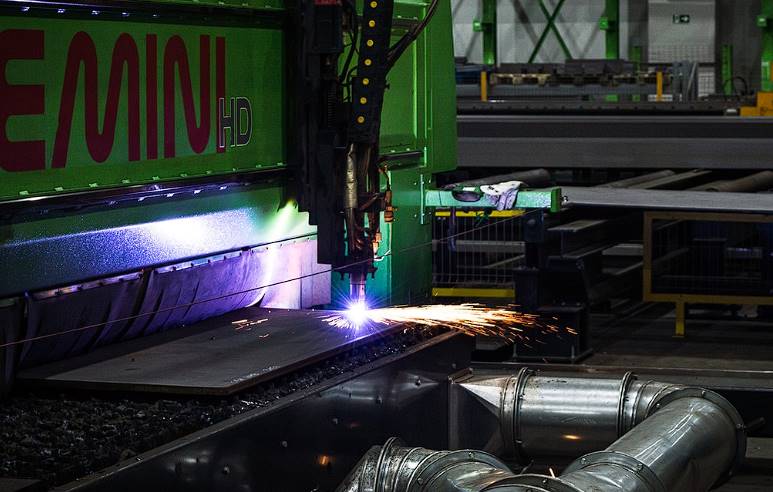There is a delicate balance between strength and durability in the manufacturing and construction industries. Whether hot-rolled steel can be galvanised is more than just academic; it affects decisions on projects ranging from massive skyscrapers to complex machinery parts. Hot-rolled steel is the base for many structures and goods because it is strong and can be used in many ways. However, even the most robust materials need a shield to fight rust all the time.
Galvanisation, which adds a protective metal layer, could be that armour. But can this process work well with hot-rolled steel with its scales and textures? This blog post details whether hot-rolled steel can be used in galvanisation. It talks about the technical details, perks, and things to consider. Follow along as we explain how to make hot-rolled steel last longer by galvanising it, making sure it can withstand the forces of nature.
Figuring Out Hot-Rolled Steel
Hot-rolled steel is a fundamental material in the construction and automotive industries, known for its strength, versatility, and cost-effectiveness. This type of steel undergoes a manufacturing process at high temperatures, making it easier to shape and form and resulting in unique characteristics that differentiate it from cold-rolled steel. Here's a comprehensive look at hot-rolled steel, drawing insights from industry experts and manufacturers.
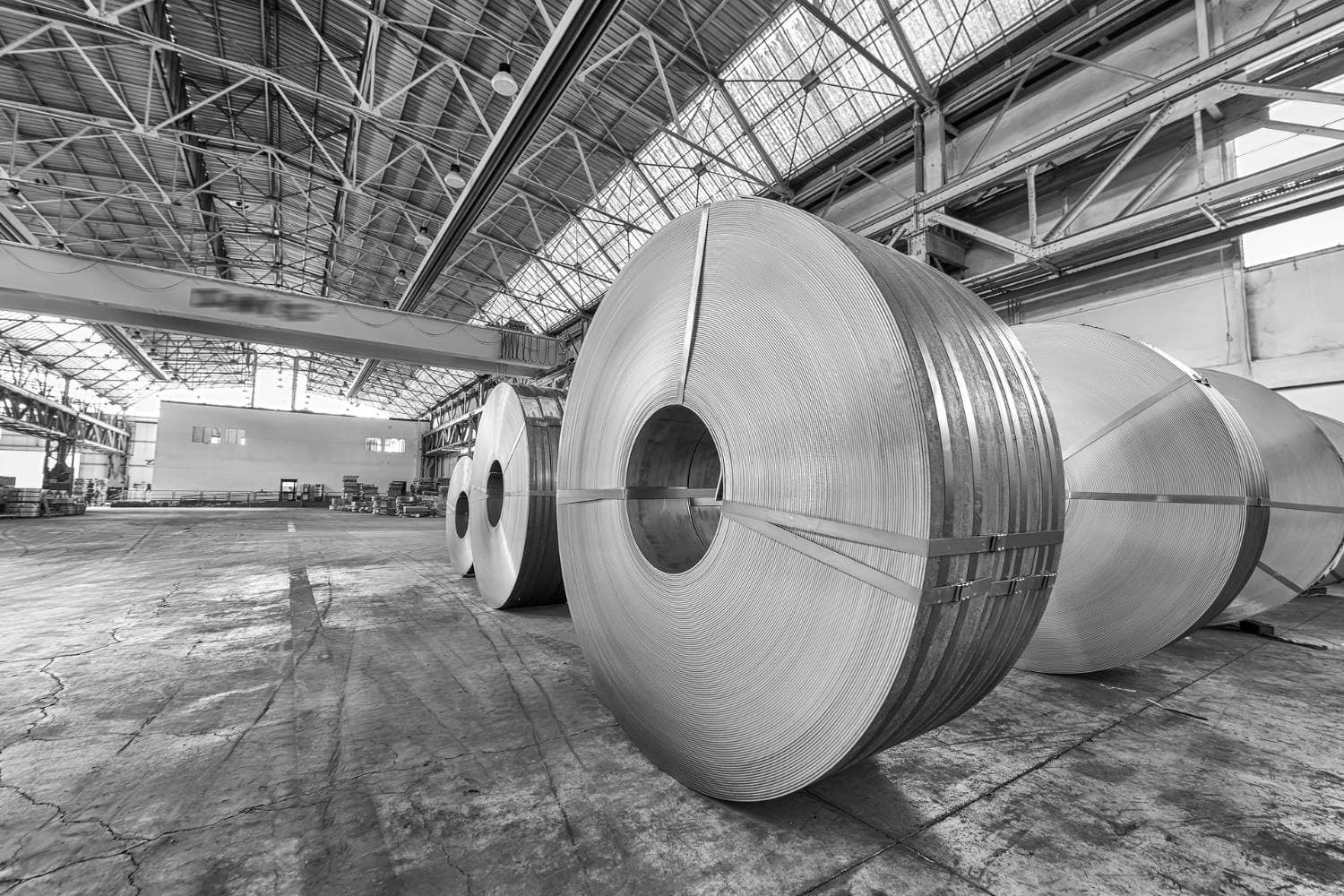
The Production Process:
Hot-rolled steel is created by heating steel above its recrystallisation temperature and rolling it at high temperatures. This process begins with a large, rectangular slab of metal known as a billet, which is heated and then compressed into a large roll. The roll is then passed through a series of rollers to achieve the desired dimensions. This method allows hot-rolled steel to be easily shaped and formed, making it suitable for various applications.
Characteristics And Advantages:
One key feature of hot-rolled steel is its scaly finish, which can be removed through pickling, grinding, or sandblasting. This steel is normalised, meaning it's free from internal stresses that can arise from quenching or work-hardening processes. Plate products tend to have slightly rounded edges and corners and may exhibit slight distortions resulting from the cooling process. Despite these characteristics, hot-rolled steel offers increased flexibility and toughness.
The primary advantage of hot-rolled steel is its lower cost than cold-rolled steel, attributed to the minimal processing involved in its production. It doesn't require reheating, as cold-rolled steel does, making it more economical and environmentally friendly. Also, hot-rolled steel is highly malleable, allowing it to be shaped into various shapes for different applications.
Applications:
Hot-rolled steel is utilised in scenarios where precise shapes and tolerances are not strictly required. Its applications include structural components like railroad tracks and I-beams, agricultural equipment, metal buildings, stampings, and automotive frames. The versatility and strength of hot-rolled steel make it a preferred choice for these and many other applications.
Steel Grades:
Hot-rolled steel comes in various grades, each designed for specific applications. Grades such as A-36, 1010, 1018, and others offer different strength, flexibility, and weldability properties. Understanding these grades is crucial for selecting the correct type of hot-rolled steel for your project.
Cold-Rolled Steel Comparison:
While hot-rolled steel is known for its cost-effectiveness and ease of production, cold-rolled steel offers advantages in precision, surface finish, and strength. Cold-rolled steel is processed further at room temperature to achieve tighter dimensional tolerances and a smoother surface, making it suitable for applications requiring high precision and aesthetic appeal.
The Basics Of Galvanisation
Galvanisation is a pivotal process in metal fabrication, offering a robust shield against corrosion for rolled metals such as steel and iron. This method involves coating the base metal with a thin layer of zinc, not only enhancing its durability but also its resistance to the environment's corrosive assaults. Here, we delve into the essence of galvanisation, its processes, benefits, and the vast array of applications it serves across various industries.
Understanding Galvanisation:
Galvanisation is a surface treatment technique in which zinc is applied to steel or iron to prevent rusting. The most commonly used method is hot-dip galvanising, in which the metal is submerged in a molten pool of zinc. This zinc coating acts as a barrier against corrosive elements and offers long-lasting protection to the underlying metal due to its sacrificial nature.
The Galvanization Process:
The Process Typically Involves Several Key Steps:
- Cleaning: The metal is cleaned in a degreasing solution to remove impurities.
- Pickling: The clean metal is dipped in diluted hot sulfuric acid to eliminate rust and scale.
- Fluxing: Following pickling, the steel is immersed in an aqueous solution of zinc-ammonium chloride to prepare it for zinc adhesion.
- Galvanising: The prepared metal is then galvanised through immersion in a vat of molten zinc.
- Inspection: Post-galvanisation, the metal is inspected for coating consistency and completeness.
Methods Of Galvanising:
Several techniques are employed in galvanising steel, each with its unique advantages:
- Hot-Dip Galvanizing: Involves dipping steel in molten zinc, creating a metallurgical bond and a protective zinc carbonate layer.
- Galvannealing: Combines galvanising and annealing to produce a zinc-iron alloy coating, offering excellent paint adhesion and weldability.
- Pre-Galvanising: Conducted at the initial stages of production, it involves rolling the metal through a cleaning agent and then through molten zinc.
- Electro galvanising: An electric current in an electrolyte solution transfers zinc ions onto the steel, offering a uniform coating.
Applications Across Industries:
Galvanised steel's versatility makes it suitable for a myriad of applications, including:
- Automotive: Used in car bodies for rust resistance.
- Construction: Employed in steel framing, balconies, staircases, and more for its durability and aesthetic appeal.
- Telecommunications: Ideal for phone wiring and equipment boxes due to its strength and maintenance-free longevity.
- Wind & Solar Industries: Chosen for solar projects and agricultural equipment for environmental friendliness and corrosion protection.
Compatibility Of Hot Rolled Steel With Galvanization
The compatibility of hot-rolled steel with galvanisation is a topic of significant interest within the metal fabrication and construction industries. Galvanisation, the process of applying a protective zinc coating to steel or iron, is a proven method to prevent rust and corrosion. This protective measure is crucial for extending the lifespan of steel products exposed to the elements. Through the insights gathered from various authoritative sources, we can understand the nuances of galvanising hot-rolled steel and its benefits and considerations.
Chemical Composition Considerations:
The chemical composition of hot-rolled steel, mainly the silicon (Si) and phosphorus (P) levels, can influence the outcome of the galvanisation process. These elements affect the steel's reactivity with zinc, impacting the galvanised coating's appearance, thickness, and smoothness. While variations in coating characteristics might occur due to these chemical compositions, the overall corrosion protection remains effective.
Benefits Of Galvanizing Hot Rolled Steel:
- Extended Durability: The zinc coating provides a barrier that significantly extends the steel's life by preventing rust and corrosion.
- Sacrificial Protection: Even if the coating is damaged, zinc's sacrificial nature ensures that it will corrode before the steel does, offering continued protection.
- Cost-Effectiveness: Galvanising hot-rolled steel is a cost-efficient process that enhances the material's longevity and durability without requiring frequent maintenance.
Surface Preparation And Quality:
Proper surface preparation is crucial for achieving a high-quality galvanised finish on hot-rolled steel. Mill scale and other surface imperfections may require additional steps, such as abrasive blasting, to ensure the steel is adequately prepared for galvanising. Despite these challenges, the end result is a uniformly coated product that benefits from zinc's protective qualities.
Applications And Industries:
Galvanised hot-rolled steel is widely used across various industries due to its enhanced protection against corrosion. Typical applications include construction materials, automotive components, agricultural equipment, and infrastructure projects. Its versatility and improved durability make it an ideal choice for projects requiring environmental wear and tear resistance.

The Galvanization Process For Hot Rolled Steel
The galvanisation process for hot-rolled steel is a critical procedure to enhance the steel's durability and resistance to corrosion. This process involves several key steps, ensuring a zinc coating thoroughly protects the steel. Here's a detailed overview of the galvanisation process explicitly tailored for hot-rolled steel based on insights from industry experts.
Cleaning Cycle:
The initial stage of the galvanisation process involves thoroughly cleaning the steel. This is crucial as the galvanisation reaction only occurs on a chemically clean surface. The cleaning cycle typically includes degreasing to remove grease, dirt, and other contaminants, followed by pickling in hydrochloric acid to eliminate rust and mill scale. This preparation ensures that the surface is free from any impurities that could hinder the adhesion of the zinc coating.
Fluxing:
Following cleaning, the steel undergoes a fluxing procedure, which is essential for preparing the steel's surface for galvanisation. Fluxing, usually done by dipping the steel in a solution of zinc ammonium chloride, removes the last traces of oxide from the surface, allowing the molten zinc to effectively wet the steel. This step is pivotal in ensuring a uniform and consistent zinc coating.
Galvanising:
The core of the process is the immersion of the prepared steel into a bath of molten zinc, maintained at around 450°C (842°F). This step forms a metallurgically bonded coating that robustly protects the steel from harsh environments. The interaction between the steel and molten zinc creates a series of zinc-iron alloy layers, providing comprehensive corrosion resistance.
Post Treatment (Optional):
After the steel is withdrawn from the zinc bath, it may undergo post-treatment processes such as quenching in water or air cooling. These steps are optional for the quality of the galvanisation but may be employed for additional protection or aesthetic purposes. The galvanised steel exhibits a bright, shiny appearance, characterised by a crystallised pattern on the surface known as a 'spangle'.
Conclusion
The balance between strength and durability is crucial in the manufacturing and construction industries, and galvanised steel is a popular choice for various projects. Hot-rolled steel is known for its strength, versatility, and cost-effectiveness. Its production process involves heating steel above its recrystallisation temperature and rolling it at high temperatures. This process allows for easy shaping and form, making it suitable for various applications.
Hot-rolled steel has a scaly finish, normalised, and increased flexibility and toughness. It has a lower cost than cold-rolled steel due to minimal processing and no need for reheating. It is also highly malleable, allowing it to be turned into various shapes for various applications.
Hot-rolled steel comes in various grades, each designed for specific applications. Cold-rolled steel is processed further at room temperature to achieve tighter dimensional tolerances and a smoother surface, making it suitable for high precision and aesthetic appeal.
Galvanisation is a crucial process in metal fabrication. It involves coating the base metal with a thin layer of zinc to prevent rusting. Hot-dip galvanisation is the most commonly used method, in which the metal is submerged in a molten zinc pool. The process typically involves several key steps, including cleaning, pickling, fluxing, galvanisation, and inspection.
Galvanising steel is a process that involves applying a protective zinc coating to steel or iron, preventing rust and corrosion. It is widely used in various industries, including automotive, construction, telecommunications, and wind and solar industries. The chemical composition of hot-rolled steel, particularly the levels of silicon and phosphorus, can influence the outcome of the galvanisation process. The benefits of galvanising hot-rolled steel include extended durability, sacrificial protection, and cost-effectiveness.
The galvanisation process for hot-rolled steel involves several key steps, including a thorough cleaning cycle, fluxing, and immersion in a molten zinc bath. The cleaning cycle removes contaminants and contaminants, while fluxing removes oxide and allows the molten zinc to wet the steel effectively. The core of the galvanisation process involves:
- They are immersing the steel into a bath of molten zinc.
- I am maintaining a temperature of around 450°C (842°F).
- This results in a metallurgically bonded coating that provides comprehensive corrosion resistance.
Post-treatment processes, such as quenching in water or air cooling, may be employed for additional protection or aesthetic purposes. The galvanised steel exhibits a bright, shiny appearance, characterised by a crystallised pattern on the surface known as a spangle. The compatibility of hot-rolled steel with galvanisation is a significant topic in the metal fabrication and construction industries.
Content Summary
- Hot-rolled steel is a cornerstone in industries like construction and automotive due to its strength and versatility.
- This steel type is shaped and formed at high temperatures, creating unique characteristics that set it apart from cold-rolled steel.
- Hot-rolled steel production involves heating the steel above its recrystallisation temperature and rolling it at high temperatures.
- Hot-rolled steel features a scaly finish, which can be removed through various processes such as pickling or grinding.
- It is normalised to free it from internal stresses arising from quenching or work-hardening.
- Hot-rolled steel's edges and corners tend to be slightly rounded, and it may show slight distortions due to the cooling process.
- Its main advantage lies in its lower cost than cold-rolled steel, thanks to minimal processing.
- The steel's high malleability allows it to be crafted into various shapes, making it suitable for various applications.
- It is used in scenarios where precise shapes and tolerances, such as structural components and agricultural equipment, are not strictly necessary.
- Hot-rolled steel comes in various grades, each designed for specific applications, offering different strength, flexibility, and weldability properties.
- Compared to cold-rolled steel, hot-rolled steel is more cost-effective and easier to produce but lacks its counterpart's precision and surface finish.
- Galvanisation is a key process in metal fabrication, providing a protective zinc layer to steel and iron to prevent rust.
- The most common galvanisation method is hot-dip galvanising, where the metal is submerged in molten zinc.
- This zinc coating is a barrier against corrosive elements, offering long-lasting protection to the underlying metal.
- The galvanisation process involves cleaning the metal, pickling it in sulfuric acid, fluxing it in zinc-ammonium chloride, and then galvanising by immersion in molten zinc.
- Various galvanising techniques, each with unique advantages, include hot-dip galvanising, galvannealing, pre-galvanising, and electrogalvanising.
- Galvanised steel is widely used in industries requiring corrosion resistance without the cost of stainless steel.
- The compatibility of hot-rolled steel with galvanisation is significant for industries aiming to enhance steel's durability against corrosion.
- The chemical composition of hot-rolled steel, especially silicon and phosphorus levels, can affect the galvanisation outcome.
- Galvanising hot-rolled steel extends its durability by providing a barrier against rust and corrosion.
- The zinc coating offers sacrificial protection, corroding before the steel does, even if the coating is damaged.
- Galvanising is a cost-efficient process that enhances the material's longevity and durability without frequent maintenance.
- Proper surface preparation is crucial for achieving a high-quality galvanised finish on hot-rolled steel.
- Galvanised hot-rolled steel is used across various industries for its enhanced protection against corrosion.
- The galvanisation process for hot-rolled steel involves cleaning, fluxing, and immersion in molten zinc to form a protective coating.
- Cleaning ensures the steel is free from grease, dirt, and scale, preparing it for the zinc coating.
- Fluxing removes the last traces of oxide from the steel's surface, allowing the molten zinc to wet the steel effectively.
- The immersion in molten zinc at around 450°C forms a metallurgically bonded coating that protects the steel from harsh environments.
- Post-treatment processes like quenching in water or air cooling are optional but can provide additional protection or aesthetic benefits.
- The galvanised steel exhibits a bright, shiny appearance with a crystallised pattern known as 'spangle'.
- Galvanisation is an environmentally friendly process that prevents corrosion without emitting harmful substances.
- Hot-dip galvanising is a simple process that provides long-term corrosion protection to steelwork.
- The galvanising reaction requires a chemically clean surface, highlighting the importance of the cleaning cycle.
- The fluxing procedure prepares the steel for galvanisation by removing the last traces of oxide.
- The metallurgically bonded zinc coating formed during galvanisation protects the steel from harsh external and internal environments.
- Galvanised steel's 'spangle' pattern is a tell-tale sign of the hot-dip galvanising method.
- Hot-dip galvanising is an economical choice that can be quickly executed on simple and complex shapes.
- Galvanised steel can be worked and machined similarly to uncoated materials.
- Galvannealing combines galvanising and annealing to produce a specialised coating on steel.
- Pre-galvanising is performed at the initial stages of production, rolling the metal through a cleaning agent and then through molten zinc.
- Electro galvanising involves using an electric current in an electrolyte solution to deposit zinc on the steel.
- Galvanised metals are used in various applications, including automotive bodies, construction steel framing, and telecommunications equipment.
- Galvanised steel's durability and rust resistance make it popular in modern "steel frame" buildings and outdoor structures.
- The environmental friendliness of hot-dipped galvanised steel is appreciated in solar projects and the agriculture industry.
- The automotive industry utilises zinc-coated bodies for automobiles to provide rust resistance and 'anti-rust warranties'.
- The construction industry values galvanised steel for its durability, aesthetics, and resistance to corrosion.
- The telecommunication industry benefits from hot-galvanised steel for phone wiring and equipment boxes, reducing maintenance needs.
- The galvanising process is versatile, treating articles ranging in size from nuts and bolts to long structural sections.
- Galvanising provides barrier protection between steel surfaces and their environment, with zinc corroding in preference to steel.
- Galvanising hot-rolled steel is critical for enhancing its resistance to corrosion and ensuring its longevity and reliability in various applications.
Frequently Asked Questions
Yes, hot-rolled steel can be galvanised. The process involves cleaning the steel and then dipping it into a bath of molten zinc to apply a protective coating that prevents rust and corrosion.
Galvanising hot-rolled steel is important because it significantly enhances the steel's resistance to corrosion and rust, extending its lifespan and maintaining its structural integrity in various environments.
The primary method for galvanising hot-rolled steel is hot-dip galvanising. This process involves immersing the steel in a bath of molten zinc to form a protective zinc coating over the surface.
No, the galvanisation process does not negatively affect the strength of hot-rolled steel. Instead, it protects against corrosion without compromising the steel's structural properties.
The chemical composition, particularly the levels of silicon (Si) and phosphorus (P), can influence the quality and appearance of the zinc coating. However, the galvanisation's overall corrosion protection remains effective.

